Tech Question: Is the cycling industry selling riders bikes that are just too aggressive for them?
Physiotherapist Bike Fitter Nicole Oh looks at the current market trends, and compares them to what most cyclists actually need...

It’s no surprise that there has been a huge increase in cycling participation in the past decade, with a visible increase in the number of cyclists on the roads. This increase has been largely in people cycling for fitness, recreation or non-racing events such as sportives.
Looking just at the UK, in 2012 British Cycling had 64,000 members and 21,000 Race licence holders. By 2022, this had grown to 150,000 members and 26,500 Race licence holders. Although this is a healthy increase in those who race at 26%, the number of total members has increased by a whopping 134% or 2.3 times more.
So, with this changing demographic of cyclists, is there now a discrepancy between the bikes the cycling industry is guiding customers towards, and the bikes that actually suit their bodies and riding needs? After all, no human being is naturally designed to fold their body into an aggressive racing position without a fair amount of effort and training, and, is that really what leisure riders need or want?
CHARACTERISTICS OF RACE VS ENDURANCE GEOMETRY BIKES
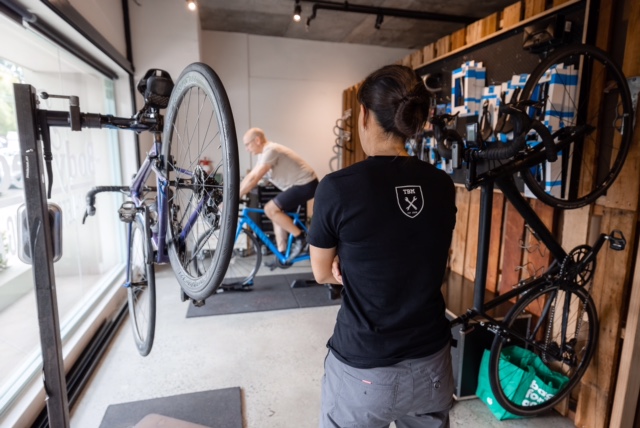
Nicole Oh views a client's fit during a session
The tube lengths and angles which make up a bicycle are referred to as the geometry. Geometry plays a huge role in defining the personality of a bike, and put simply, it runs on a continuum between aggressive “race” geometry and more relaxed “endurance” geometry.
A race geometry bike will tend to have a longer reach and a lower stack (front end) and enable people to achieve a more horizontal position of the torso and lower centre of gravity, which is more aerodynamic and maneuverable. Handling will be quicker and more nimble.
An endurance geometry bike will have a higher stack and shorter reach resulting in a more upright position, with less demand on flexibility and core stability, the handling implication is a bike with greater stability and control.
WHICH BIKES ARE PEOPLE BUYING?
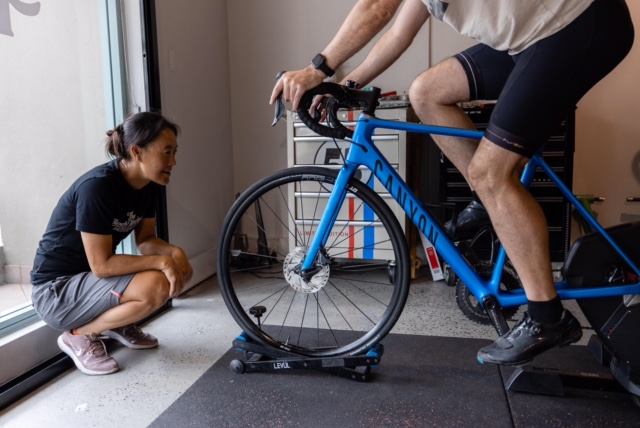
When people come into the clinic for a bike fit, the first question I ask them is why they are getting a fit and what type of riding they do. More often than not, their goal is to be comfortable and efficient, or to solve issues with pain or injury. Rarely are they prioritising out-and-out performance, with the goal of going faster. This could be due to the fact I am a Physiotherapist as well as a Bike fitter, and people will often choose our clinic because of this.
A lot of the cyclists I see are also relatively new to cycling, having recently dusted off an old bike or bought a new bike, often in the preceding three to six months. I tend to see clients after they’ve purchased a bike, so to get a little insight into what happens during that process, I spoke to co-owner of Surry Hills (Sydney, Aus) bike shop Chainsmith, Alison McGregor.
Chainsmith offers a variety of road bike options from custom frame and custom build to factory frame custom build, and factory comlpete bikes - so the shoppers certainly aren’t limited by what’s available.
“We see two kinds of rider. For rider A, 'best bikes' are thought to be ridden by pros. They're intent on buying short stack/long reach geometries where lightweight is king. The purchase is based on pro imitation with little appreciation for bikefit-first philosophy,” McGregor explains.
“While a small proportion of cyclists can hold this ride position for longer periods, most amateur riders aren't working on their strength, stability, or flexibility. Instead, they’re crouched over computers for hours a day.” This situation sounds, in many cases, not ideal.
“On the other side, our store also attracts riders who don't follow trends or rules. This is rider B, who respects advice external from branding phenomena and influence,” she goes on. “Clients after custom bikes tend to be open to options suited to their physical attributes and riding goals. But for each custom client gained there are 5 clients asking for race-ready frames with little regard for suitable fit or geometry.”
We spend quite a bit of time explaining why everyday riders likely to participate in sportives or longer rides with friends, benefit from being comfortable over being aerodynamic
Alison McGregor, Chainsmith bike shop
And, which offering and rider is more common? “Race geometry is more readily available and matches the high proportion of requests we see for race frames over more realistic 'endurance' geometry. Of the factory frames we sell, there's certainly a trend for clients to request race geometry over endurance. We spend quite a bit of time explaining why everyday riders likely to participate in sportives or longer rides with friends, benefit from being comfortable over being aerodynamic,” McGregor confirms.
Bike brands are certainly not trying to sell customers the ‘wrong’ bikes. Trek offers a raft of options, from the racey Madone and Emonda to the much more endurance focused Domane.
Trek’s media and PR specialist Jez Loftus said that both the Madone and Emonda race bikes have a “pretty good fit window”, allowing a wide range of riders to find a position that’s both comfortable and efficient.
“I think you'll always get consumers wanting that Pro bike no matter what, and I think this is where fit programs help educate and provide the consumer with a good level of service and duty of care,” he said.
“There's also been a bigger uptake in gravel bikes which inherently have a more relaxed geometry.
Between [the gravel bike] Checkpoint, [endurance] Domane and [race] Madone/Emonda most riders should be able to find something that fits. It's the job of the trained retailer help guide and that's where we help with our training.”
Despite the education, advice and options out there, it is clear that many people do still prefer a race geometry bike for one reason or another, whether that be aesthetics, preconceived ideas, or a lack of knowledge of their own bodies. So, what are the implications for both our clients and us as bike fitters and physiotherapists?
WHAT HAPPENS WHEN YOU BUY THE ‘WRONG’ BIKE

Back pain is a common sympton
The main issues I see limiting client’s ability to ride a race geometry bike comfortably and efficiently is a lack of flexibility of the posterior chain (made up of the hamstrings, sciatic nerve mobility, hips), poor core stability, and an inability to bend at the hips.
Data from our clinic - The Body Mechanic - shows the average straight leg raise (an indicator of hamstrings and neural mobility) is 72 degrees, which for cyclists, especially those wishing to get into an aggressive positon, ideally would be more.
So, how does this manifest on the bike? A reach that is too long or a stack that is too low produces a whole range of discomforts and injuries, the most common being lower back pain, neck pain, wrist and hand pain, and saddle discomfort. A common fit “solution” is to push the saddle forwards to shorten the reach, although this will put too much weight on the front end of the bike and can cause a multitude of issues with the knees, hands and stability of the bike.
Not only that, but if you are riding a position that is at the limits of your physical capabilities, you will not be producing power efficiently, as muscles generate less force when they are at the end of their range (both too lengthened or too short).
HOW CAN WE MAKE THESE BIKES FIT?
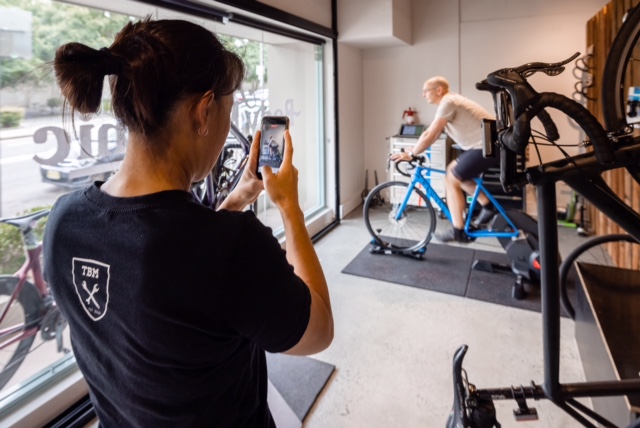
Case study
A long time cyclist came to see me, having purchased a new bike a year previously and had the shop set it up similarly to the measurements of his last bike fit (from 2008). He was experiencing some lower back pain after 1.5 hours of riding, although he considered this “normal”. He also felt like he was losing power with seated climbs.
This man had a history of lumbar disc injury and experienced episodes of back pain on and off for many years, in addition to the back discomfort on the bike. He rode 200-250km per week and had a desk job.
His screening revealed a straight leg raise of 65 degrees with significant neural tightness, and 110 degrees of hip flexion, both of which are below average. He had difficulty bending at his hips without falling into flexion at his spine.
His new bike was a Bianchi Aria (55cm), which is an aggressive bike with a stack of 541mm and reach of 390mm. His initial drop was measured at 108mm.
We lowered the saddle by 11mm, and flipped the 110mm stem so that it now had an 8 degree positive rise, which changed his drop to 67mm, and also effectively shortened his reach. He reported back to us that he was now much more comfortable, and was able to do long rides without back pain.
If he had bought Bianchi’s Endurance bike, the Infinito, in the same size, with a stack of 569mm and a reach of 381mm it would have fitted him perfectly without having to flip the stem. There would still be scope to lower the handlebars at a later date should he want to work on his flexibility and hip movement.
If you already own a bike with a race geometry, and want to ensure you’re getting the most of it, a comprehensive fit is a good place to start. This should include a physical assessment or screening to identify any potential limitations, and might involve you being prescribed a “rehab program”, which if carried out diligently, can make significant improvements over time. Flexibility exercises for the hamstrings, sciatic nerve and hip may be required, and/or core stability exercises such as Superman, dynamic planks, jacknife and hip hinging exercises such as straight leg deadlifts and bent over rows.
The bike can also be adjusted and components changed to get a better fit. A well fitting and correctly positioned saddle should support the pelvis and allow it to rotate forward. The reach can be shortened by changing to a shorter stem and/or short reach handlebars with a high hood position. However, an excessively short stem can compromise the handling that the bike was designed to provide, making it overly twitchy and unstable. The front end height may be able to be increased with riser handlebars or inverting the stem, although again, this may also compromise the handling somewhat.
A lot of our clients worry that they have bought, or are about to buy, a bike that is the wrong size for them, when more often than not, the size is not the issue, it is the shape or geometry that is the problem. Sizing up a race geometry bike results in the reach being too long, sizing down may mean the stack will be too low, whereas a bike with an endurance geometry would solve both these issues. Second hand bikes can be a particular problem if the steerer has been cut, so this should always be checked. Additionally, with the current supply issues in not only bike frames but components, a suitable geometry bike may simply not be available, and people may purchase whatever they can find in stock.
Anecdotally, I rarely see a client on an endurance frame that needs the stem to be changed to an unusually long one to increase the reach (eg. a 120mm stem on a 54cm frame), or needs a more negative stem because all the spacers have already been removed from the steerer to increase the drop (eg. -17 degrees rather than the standard -6 or -8 degrees). However, I am very often fitting clients with short stems disproportionate to their bike size, raising the height of the handlebars to their highest level and even flipping the stem to a positive angle on race frames.
Raising the bars and shortening the reach will help the rider to achieve an ideal fit, but, these bikes weren’t designed with that position in mind, it’s at odds with the ‘personality’ the bike was designed to project, which can result in negatively impacted handling.
SO WHAT DO I DO IF I HAVE BOUGHT THE WRONG BIKE??
All is not lost! Increasing the body’s capacity, whether that be strength, mobility/flexibility or core stability, will enable it to operate in and adapt to a wide range of positions, so the first port of call should be to work on a dedicated and tailored exercise program.
Changes to bike components and set up can put your body in less demanding positions, although some changes are not ideal and may sacrifice handling and the feel of the bike.
Conditioning your body to ride in a more aggressive position, with short periods riding in the drops or with the elbows bent on the hoods can also help the body to adapt. For example, start with 5 minutes repeated 3-4 times during a ride, then gradually increase, being sure not to push into pain or persistent discomfort. Our bodies are dynamic, and can change over time with activity.
Finally, if the bike really isn’t going to work for you, be sure to get advice from your bike fitter for your next purchase, especially in regards to the frame. It may be a good excuse to apply the N+1 principle!
| Brand | Race | Endurance |
| Specialized | Tarmac/Aethos | Roubaix |
| Trek | Emonda / Madone | Domane |
| Giant | TCR/Propel | Defy |
| Cannondale | SuperSix Evo/System Six | Synapse |
| Cervelo | R series/S series | Caledonia |
| Bianchi | Aria/Oltre | Infinito |
| Canyon | Ultimate/Aeroad | Endurance |
| Focus | Izalco Max | Paralane |

Thank you for reading 20 articles this month* Join now for unlimited access
Enjoy your first month for just £1 / $1 / €1
*Read 5 free articles per month without a subscription

Join now for unlimited access
Try first month for just £1 / $1 / €1
Get The Leadout Newsletter
The latest race content, interviews, features, reviews and expert buying guides, direct to your inbox!
Nicole Oh is a physiotherapist and bike fitter, with training in biomechanical assessments, sports injury rehabilitation, acupuncture and clinical pilates.
A competitive cyclist with a background in triathlon, Nicole raced at National level in the UK, also managing and co-founding the Les Filles Racing Team. Having moved to Sydney, she works as a physiotherapist at The Body Mechanic and continues to race competitively.
-
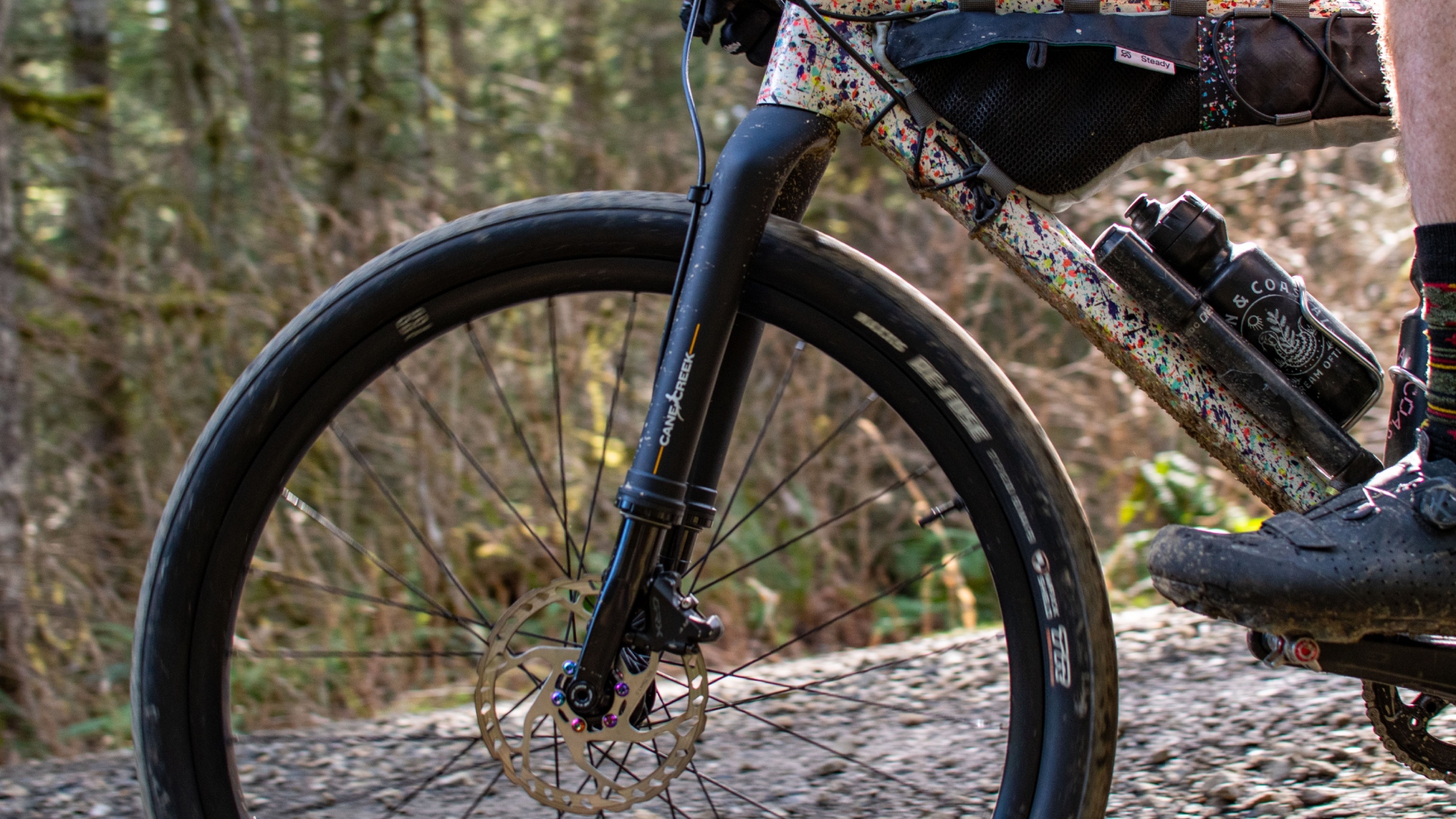 Review: Cane Creek says it made the world’s first gravel fork — but what is a gravel fork, and how does it ride?
Review: Cane Creek says it made the world’s first gravel fork — but what is a gravel fork, and how does it ride?Cane Creek claims its new fork covers the gravel category better than the mini MTB forks from RockShox and Fox, but at this price, we expected more.
By Charlie Kohlmeier
-
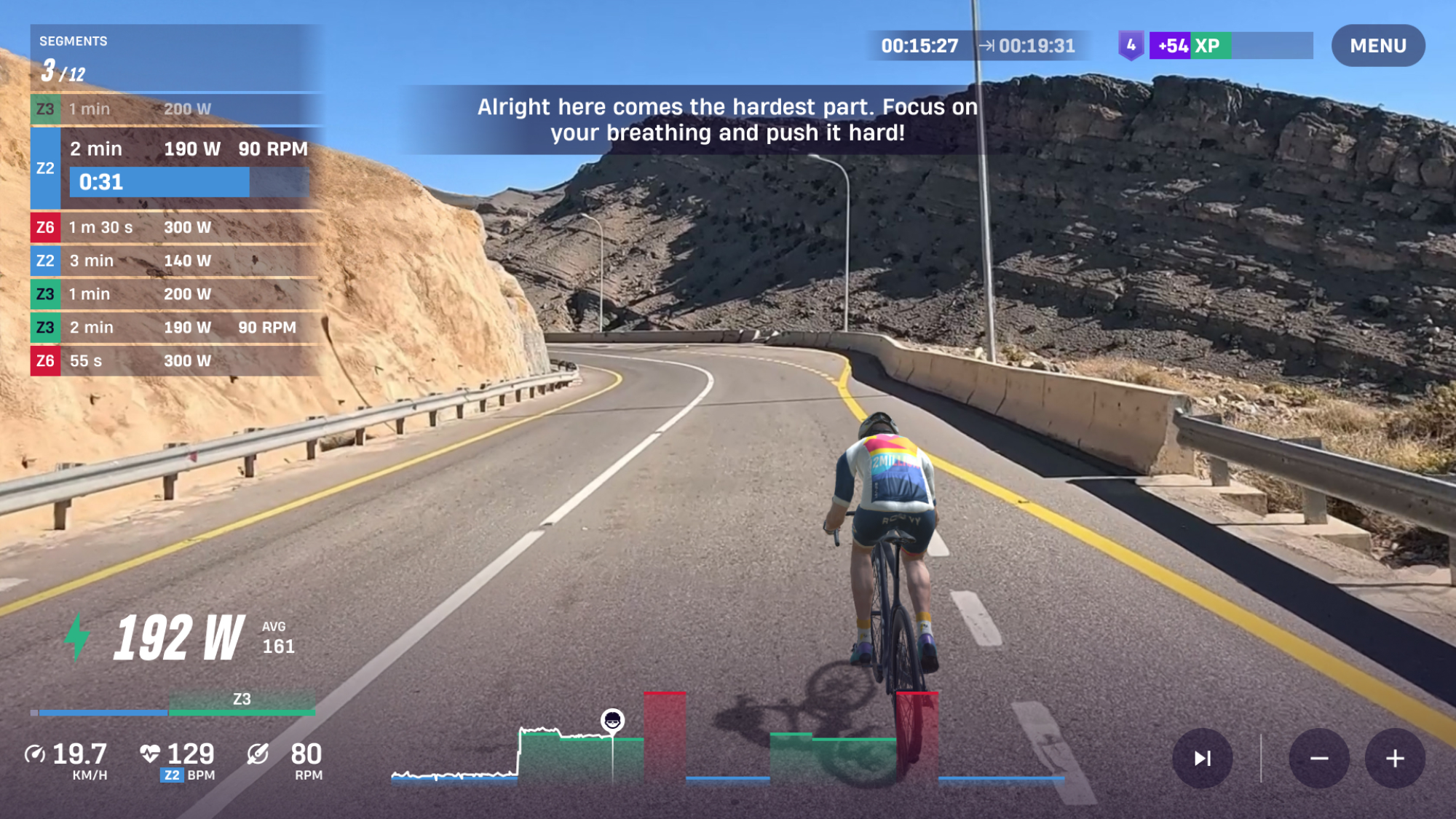 ROUVY's augmented reality Route Creator platform is now available to everyone
ROUVY's augmented reality Route Creator platform is now available to everyoneRoute Creator allows you to map out your home roads using a camera, and then ride them from your living room
By Joe Baker